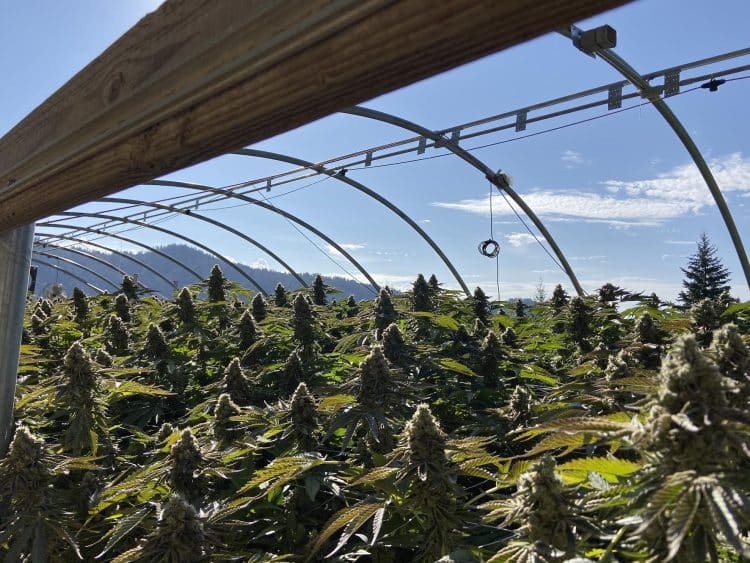When cultivating cannabis, it’s important to remember that the flowers we seek to smoke or extract from are female. Sinsemilla (seedless) varieties have been selectively bred for decades to produce the modern forms of medical cannabis, which are high in tetrahydrocannabinol (THC).
This high THC content is due to the lack of pollination and absence of male plants. The process of budding and the resulting high THC levels are influenced by hormonal balances within the plant. This intricate hormonal interplay is a notable characteristic of female cannabis plants.
The cannabis genus has two main types of photoperiod responses. The first includes the well-known cultivars, Indica and Sativa, which are photoperiodic and respond to changes in light cycles, a phenomenon known as photoperiodism. These plants can be manipulated with light spectrums to control their growth and flowering phases.
The second type includes non-photoperiodic varieties, known as ‘auto-flowering’ or Ruderalis. These plants flower based on age rather than light cycles. Both types are governed by different hormonal regulations.
In light-responsive plants, such as Sativa or Indica, there are several main hormones that regulate every aspect of the plant’s life-cycle from embryo to necrotic death. Unlike animals, which have specific glands for hormone production, plants secrete hormones from all their cells, with certain cellular structures having higher concentrations.
Cannabis plants transport and distribute these hormones through their vascular system using both the xylem and phloem (which facilitate upward and downward flow, respectively). This activity constantly balances and advances the plant toward maturity.
The Most Predominant Hormones in Cannabis
Auxins
Derived from the Greek word “auxien” meaning “to grow”, auxins are the growth regulators found in all plants. They are primarily responsible for cellular elongation and apical dominance, promoting the growth of top cola buds while limiting food distribution to lateral and lower branches. [1] Auxins are most concentrated in regions of new growth, such as young leaves.
Synthetic auxins, developed commercially from the amino acid L-tryptophan, serve various agricultural purposes, including as herbicides in forms such as benzoic acids and quinoline carboxylic acids. However, their use as growth regulators also extends to propagation tools, though overuse can lead to environmental impacts.
Cytokinins
Cytokinins are hormones that stimulate cytokinesis (cell division), which is most prevalent in growth tissues such as roots, seeds and buds. hey work in conjunction with auxins to regulate growth during the plant’s fruiting cycles. While auxins inhibit lateral growth, cytokinins promote cell division, resulting in the dense growth necessary for developing large top buds causing the “bushiness”.
Gibberellic Acid (GA)
Growth hormones play a crucial role in the development of all major plant parts, including seeds, stems, and fruits. They are responsible for synthesizing root and shoot elongation, promoting seed germination, and maturing buds. These hormones are most abundant in the top cola flowers, newly sprouted leaves, and seed stocks. Additionally, they are mass-produced by humans for use in manipulating various agricultural crops.
Ethylene
Ethylene, known as the mortality or senescence hormone, regulates the aging processes in plants and is present in nearly all tissues of auto-flowering species, which inhibits their ability to reproduce asexually via cloning. In phototropic light-sensitive plants, ethylene is most concentrated in the oldest parts of the plant, particularly in aging leaves and stem nodes.
Ethylene controls bud maturity, fruit ripening, and plant senescence, contributing to the natural wilting process. It is notable for its nature as a volatile gas (C2H4) found in nature. In large-scale agriculture, ethylene is often utilized in the form of liquid petroleum or propane gas (LP) to manipulate fruit ripening. Gas applications are used to induce flowering, while fans are employed to reduce its concentration.
The abundance of ethylene in a plant can be observed as the stem transitions from herbaceous (flexible) to woody and rigid. This transition strengthens the plant’s structure, enabling it to support the weight of dense bud flowers during growth.
Jasmonate
Jasmonate plays a significant role in plants by facilitating the production of phytochemicals that repel herbivores, including in the biosynthesis of cannabinoids. This hormone is also present in hot peppers, where it increases the Scoville units by enhancing the production of capsaicin, the compound responsible for their spiciness.
Oligosaccharins
Oligosaccharins function as part of the immune system in plants, aiding in the development of defenses against bacterial and fungal infections. This enhances cannabis’ potential as a medicinal astringent and topical aid, as well as strengthening the plant’s ability to protect itself against fungal diseases like botrytis.
Wrap Up on Hormones in Cannabis Cultivation
External factors such as aerial gases, climate, temperature, sugar content (Brix), and cultivation practices all contribute to the balance and concentration of hormones within a plant. When faced with drought or malnutrition, stress can lead to hormonal imbalances. These hormones can be manipulated for various purposes, including propagation and breeding programs.
Natural plant hormones differ significantly from synthetic hormones manufactured by humans. The use of synthetic growth regulators can disrupt natural cycles and have adverse effects on surrounding environments. Therefore, caution should be exercised when considering the use of synthetic growth regulators.
References:
[1] Lee ZH, Hirakawa T, Yamaguchi N, Ito T. The Roles of Plant Hormones and Their Interactions with Regulatory Genes in Determining Meristem Activity. Int J Mol Sci. 2019 Aug 20;20(16):4065. doi: 10.3390/ijms20164065. PMID: 31434317; PMCID: PMC6720427.











